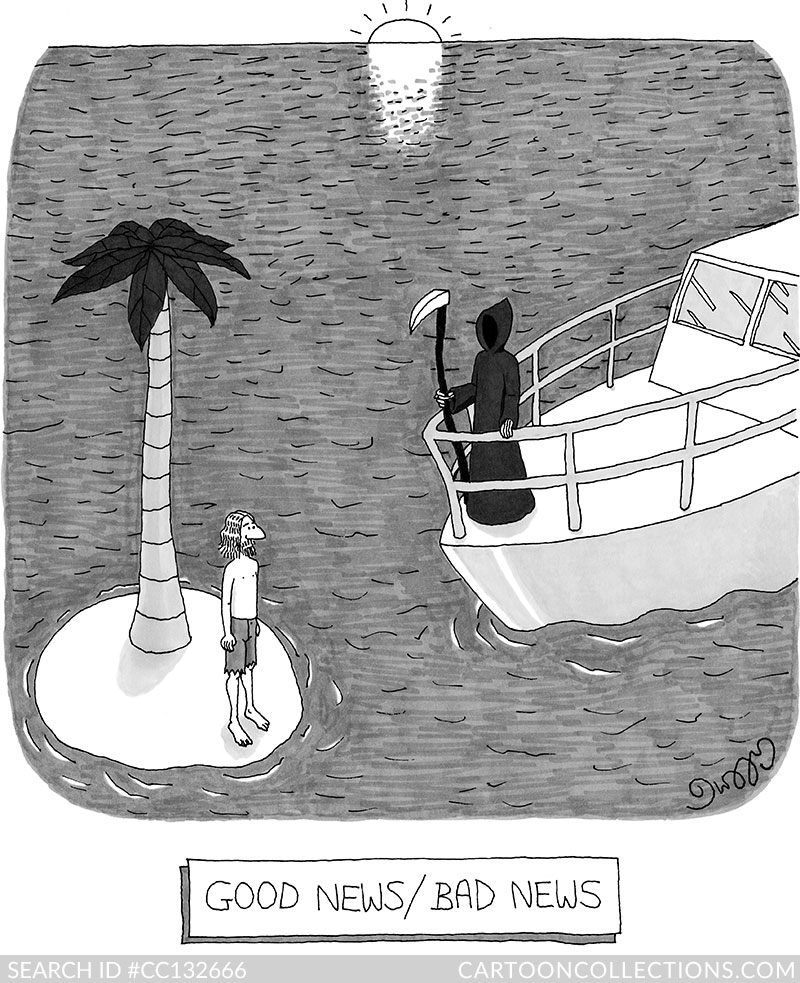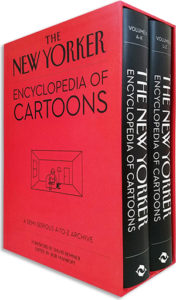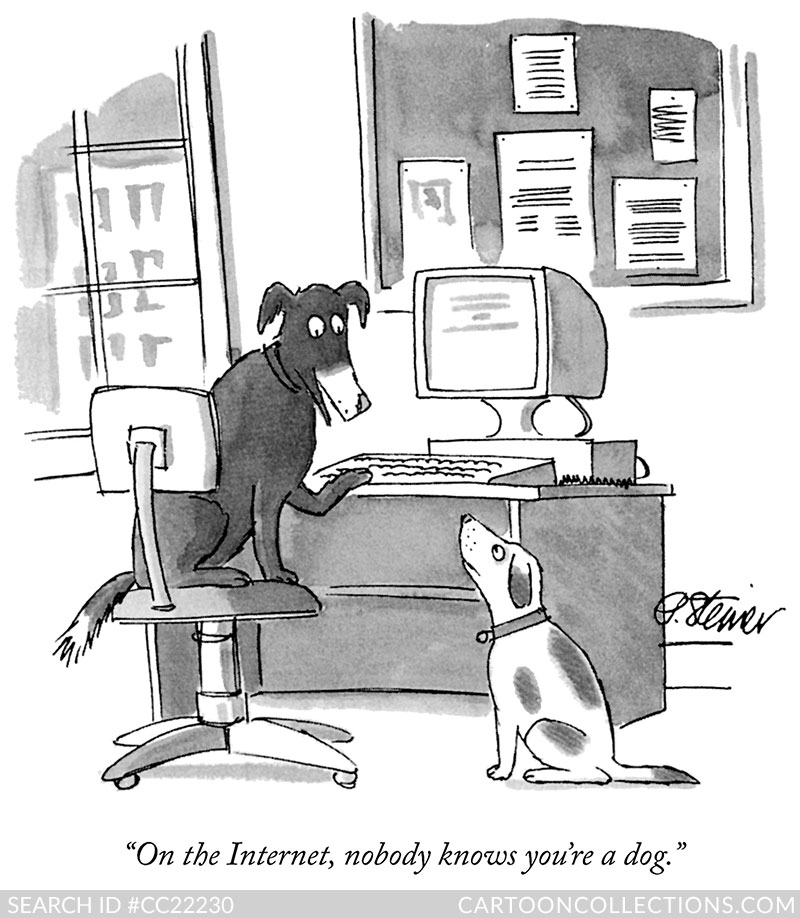 I once quipped that ninety-five percent of New Yorker subscribers read the cartoons first and the other five percent lie. Look, as terrific as the magazine’s articles are, you skip some of them; what you don’t skip are the cartoons. I’m not knocking those award-winning articles—hey, I’ve read some of them myself—but I’ve never seen one taped to a refrigerator.
I once quipped that ninety-five percent of New Yorker subscribers read the cartoons first and the other five percent lie. Look, as terrific as the magazine’s articles are, you skip some of them; what you don’t skip are the cartoons. I’m not knocking those award-winning articles—hey, I’ve read some of them myself—but I’ve never seen one taped to a refrigerator.
The classic New Yorker cartoon is a concise idea conveyed through a compelling image and a single-line caption that you get instantly and remember always. (The dog on a chair in front of a computer, explaining to his canine companion: “On the Internet, nobody knows you’re a dog.”) But wait—an encyclopedia of cartoons? Well, sure. A reader encounters a cartoon one by one, but the cartoonist is working within a rich tradition—an encyclopedic tradition, you could say—of topics and tropes. Cartoons are in dialogue with other cartoons, and the three thousand cartoons that The New Yorker Encyclopedia of Cartoons offers within its fifteen hundred pages, situated by subject, are variously paying homage, throwing down, or playing one-upmanship with one another.
They’ve certainly got a lot to say for themselves. In the letter “A” alone, you have Accountants, Adam and Eve, Adultery, Advertising, Aging, Air Travel, Alternative Energy, American History, Archeology, Architecture, Artists, Astronomy, Atlas and Automation. At the other end of the alphabet, “Z” spans Zebras, Zen, Zeus, Zombies, Zoos, and Zorro. But not, alas, Zygotes, because, well, we’ve got no zygote cartoons. Creative as New Yorker cartoonists are, they didn’t create any. But, if my Sex Ed memory serves me correctly, zygotes have something to do with Sex, and there are plenty on that ever-fertile topic in S, along with such stalwarts as Saint Peter, Scientists, Sisyphus, Space Aliens, Stonehenge and Super Heroes.
 Great cartoon clichés like these are the inspiration for this magnum opus, and in assembling it, I drew on my decades-long experience at The New Yorker as a cartoonist and Cartoon Editor. But I can already hear you wondering: Isn’t “Great clichés” an oxymoron? Far from it. For cartoonists, no cliché is an island. Each classic template is an opportunity to blend the known with the novel to create the unexpected; familiarity breeds content. These two volumes celebrate that iconic content from which generations of cartoonists have fashioned laughs and insights, with no end in sight. That’s why there will never be a last Desert Island cartoon. The End isn’t Nigh for Doomsayers. And The Grim Reaper is never coming for himself.
Great cartoon clichés like these are the inspiration for this magnum opus, and in assembling it, I drew on my decades-long experience at The New Yorker as a cartoonist and Cartoon Editor. But I can already hear you wondering: Isn’t “Great clichés” an oxymoron? Far from it. For cartoonists, no cliché is an island. Each classic template is an opportunity to blend the known with the novel to create the unexpected; familiarity breeds content. These two volumes celebrate that iconic content from which generations of cartoonists have fashioned laughs and insights, with no end in sight. That’s why there will never be a last Desert Island cartoon. The End isn’t Nigh for Doomsayers. And The Grim Reaper is never coming for himself.
So turn the pages. Hear the buzz and hubbub. Pause to take in the brief commentaries interspersed through the volumes. But take my advice: read the cartoons first.



